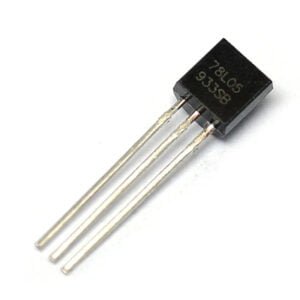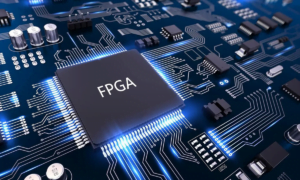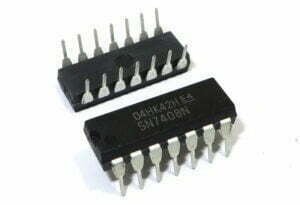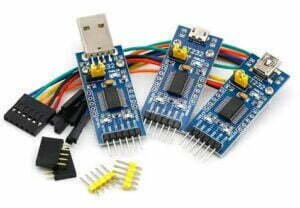Architectural Differences: The Battle of RISC vs. CISC
The STM32 microcontroller is based on the ARM Cortex-M series core, utilizing a Reduced Instruction Set Computing (RISC) architecture. This means it has a simpler instruction set, faster execution speed, and lower power consumption. RISC architecture allows STM32 to operate at higher clock frequencies and larger memory capacities, making it ideal for handling complex tasks.
In contrast, the 51 microcontroller is based on a traditional Harvard architecture and uses a Complex Instruction Set Computing (CISC) architecture. The CISC architecture has a more extensive and complex instruction set, but it generally has lower execution efficiency. As a result, the 51 microcontroller operates at lower clock frequencies and has smaller memory, making it more suitable for simpler control tasks.
Key Point: STM32, with its RISC architecture, offers better instruction execution efficiency and power management, making it suitable for applications requiring high processing speed and low power consumption.
Performance and Storage: From Basic to High-End
STM32 microcontrollers are known for their robust computing power and abundant storage resources. With a 32-bit instruction set, STM32 far outperforms the 8-bit instruction set of the 51 microcontroller. Additionally, STM32 typically includes tens of kilobytes or more of on-chip memory, such as SRAM and Flash, providing ample space for complex applications.
While the 51 microcontroller is a classic, its performance is relatively limited. Its slower processing speed and smaller storage capacity, usually only a few kilobytes of on-chip memory, constrain its ability to handle large-scale data or complex algorithms.
Key Point: STM32 significantly outperforms the 51 microcontroller in both performance and storage, making it ideal for high-end applications requiring fast processing and large storage capacities.
Peripheral Interfaces and Functions: Richness vs. Simplicity
STM32 microcontrollers offer a wide range of peripheral interfaces, including GPIO, UART, SPI, I2C, USB, and CAN, among others. These interfaces support various communication protocols, meeting the diverse needs of complex system designs. Additionally, STM32 supports advanced features such as hardware encryption, floating-point operations, and DSP instruction sets, further expanding its application possibilities.
The 51 microcontroller has fewer peripheral interfaces, and some advanced functions require external chips for implementation. For example, I2C communication often needs a dedicated I2C interface chip. This limitation restricts the 51 microcontroller’s use in complex system designs.
Key Point: STM32 offers a richer and more powerful set of peripheral interfaces and functions, meeting the needs of various complex applications, while the 51 microcontroller requires external expansion to achieve more functions.
Power Management: Innovations in Low Power Consumption
STM32 microcontrollers utilize several low-power technologies, such as sleep and standby modes, enabling them to operate in low-power states. These features make STM32 particularly suitable for power-sensitive applications like wearable devices and sensor networks. STM32 also supports dynamic voltage regulation and clock management, adjusting clock frequency and voltage levels according to system load to further optimize power consumption.
Although the 51 microcontroller also has some power management capabilities, its methods are relatively simple. Reducing power consumption typically involves turning off internal clocks and peripherals. However, in applications requiring ultra-low power consumption, the 51 microcontroller may fall short.
Key Point: STM32 employs more advanced power management techniques, allowing it to achieve lower power consumption while maintaining performance, whereas the 51 microcontroller relies on simpler methods to reduce power usage.
Development Environment and Tools: From Basic to Professional
STM32 microcontrollers offer extensive development tools and environment support, such as Keil MDK, IAR Embedded Workbench, and STM32CubeIDE. These tools are powerful and easy to use, helping developers efficiently complete project development and debugging. Additionally, STM32 has a large user base and active community support, providing developers with easy access to tutorials, code samples, and development board resources.
While the 51 microcontroller also has development environment support, such as Keil uVision, its tools and environments may be somewhat limited. For developers needing advanced features and professional support, the 51 microcontroller’s development environment might be insufficient.
Key Point: STM32 provides a more comprehensive and professional development environment and tool support, suitable for various development needs from basic to advanced, while the 51 microcontroller’s environment is more straightforward and suitable for beginners and basic applications.
Application Fields: From Classic to Cutting-Edge
STM32 microcontrollers, with their powerful performance, rich peripheral interfaces, and low-power features, are widely used in various fields, including industrial automation, consumer electronics, communication devices, IoT, and medical equipment. STM32 can be found in everything from PLCs and industrial controllers to smart homes and wearable devices, from gateways and routers to portable medical and health monitoring devices.
As a classic microcontroller, the 51 still holds a place in the market despite its relatively limited application scope. It remains competitive in areas such as household appliances, automotive, industrial control, and communication devices, thanks to its low cost and ease of use.
Key Point: STM32 has become a top choice in embedded system development due to its extensive application fields and powerful performance, while the 51 microcontroller maintains competitiveness in specific areas due to its low cost and user-friendliness.
Conclusion
Both STM32 and 51 microcontrollers have unique technical features and application scenarios. STM32 dominates high-end applications with its powerful performance, rich peripheral interfaces, and low power consumption, while the 51 microcontroller retains market competitiveness in specific areas due to its low cost and simplicity. Developers should carefully consider their specific application needs and choose the microcontroller that best meets their requirements to achieve optimal development results and economic efficiency.





